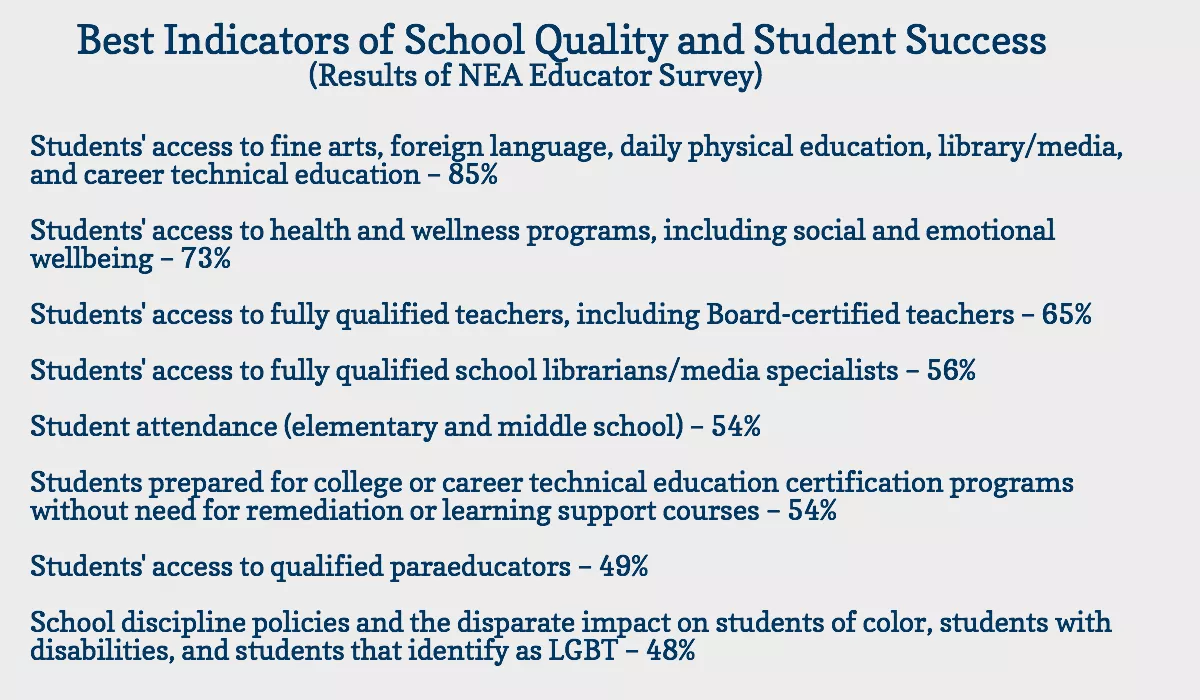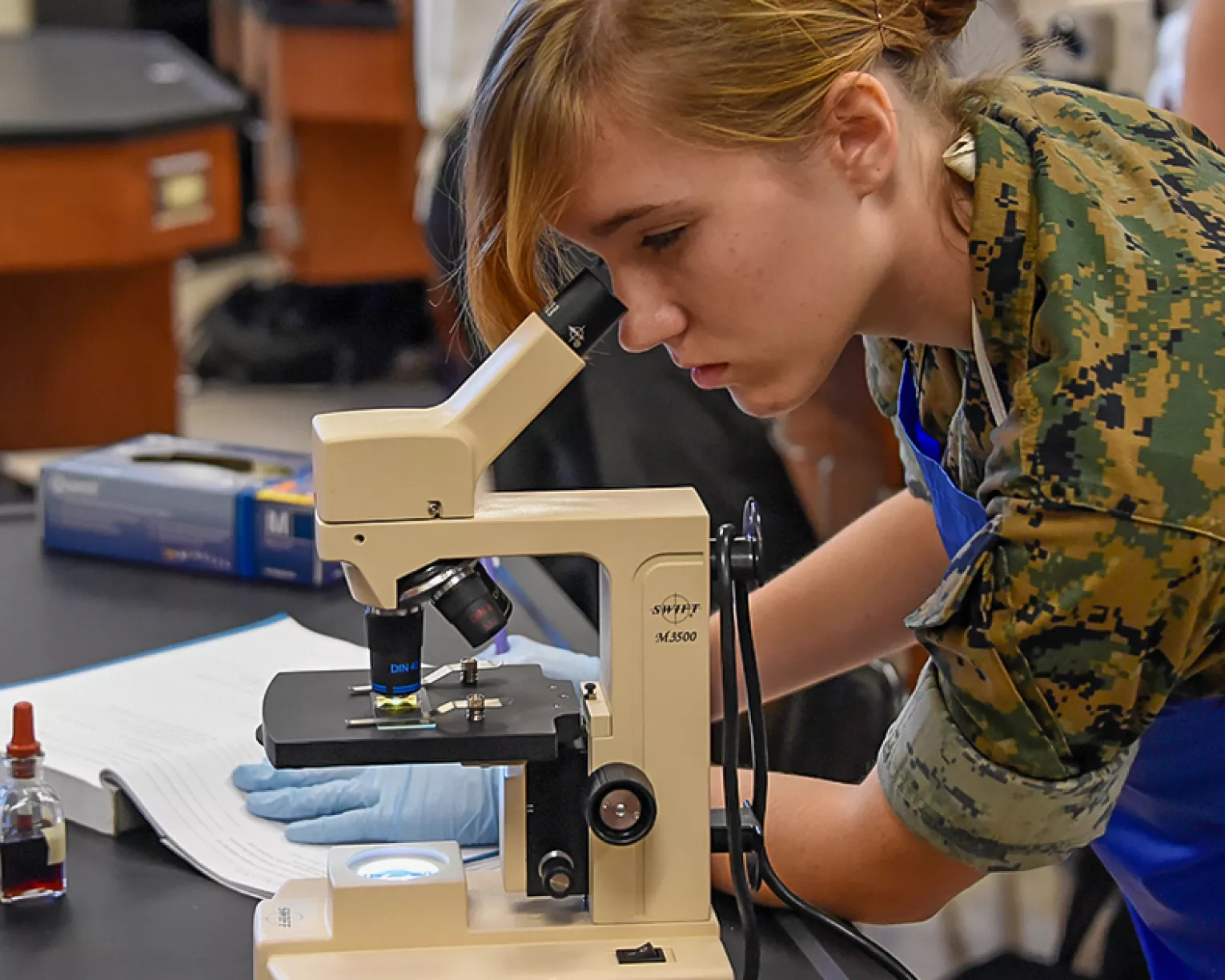
The Every Student Succeeds Act (ESSA) calls for state-designed accountability systems. It’s an end to the era of one-size-fits-all approach to accountability. ESSA limits the U.S. Department of Education’s power to make policy (for example, by granting waivers to the law). It prohibits the U.S. Secretary of Education from mandating accountability parameters and criteria, the weight given to different elements of accountability plans, how teachers are evaluated, what constitutes teacher effectiveness, and more. The result? The people who know students best can design systems that are fair, and work.
A Fair Approach
State-accountability systems must involve input from stakeholders, including educators. The systems must include:
- Reading and math assessments
- High school graduation rates
- Another state determined indicator for elementary and middle schools
- English language proficiency
- At least one indicator of school success or student support. NEA refers to this as the “Opportunity Indicator”. You can find out more about Opportunity Indicators in our Opportunity Indicator Dashboard document, linked below.
(Note: the first four indicators in the aggregate must weigh more than the fifth on school success/student support)

Tracking Change
States are encouraged to update their accountability systems every few years to ensure they are adequately identifying and closing opportunity gaps. Each year, the U.S. Department of Education publishes guidelines for submitting amendments to state ESSA plans. The NEA is diligent in providing regular updates and guidance for ensuring state ESSA plans include input from educators.
Get Involved
Consistent communication with your State Department of Education is key to weighing in on indicators, long-term goals, and more. All states must publish and allow opportunities for comments on proposed ESSA plans and plan amendments.
Suggested Further Reading
Learn More
Are you an affiliate?


